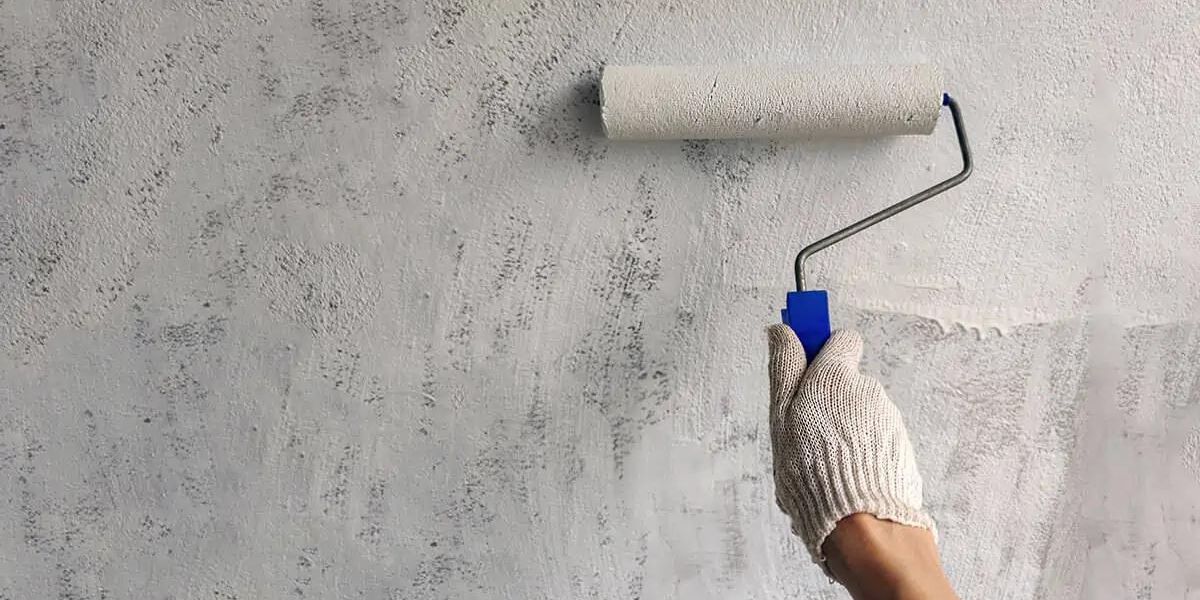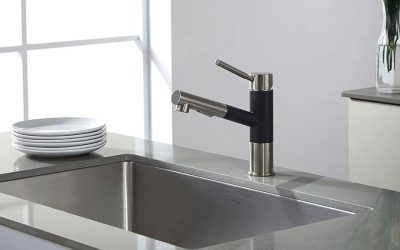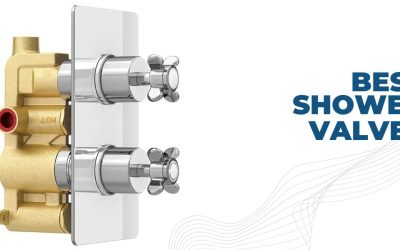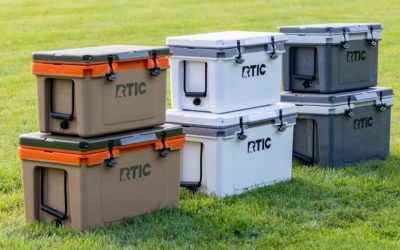If you’re a homeowner, you know how important it is to waterproof different parts of the house, such as the roof, the bathrooms, and the basement. And selecting a good waterproof sealant for basement walls.
So, as we’re focusing on the basement, what’s the best basement waterproofing sealer? Good question. This article has the answer.
With so many options gnawing for your attention, it’s normal to get lost. But if you know your priorities, it becomes simple. This article will cover a select few basements waterproofing sealers and focus on their positives and negatives to help you make a decision.
Before going into the details, first, let’s look at our lucky 7 and a short comparison between them.
What is the Best Sealant for Basement Walls? Let’s find the Answers
All 7 of our recommended sealants pass the standard bars for high quality. Still, they have some differences which might be of interest to you. Here’s a comparison chart between each of them.
Among the options you may find in the market, not all of them are what they say they are. After the comparison chart, we have reviewed the 7 sealants that we recommend. Keep reading to know them.
1. Liquid Rubber Foundation and Basement Sealant
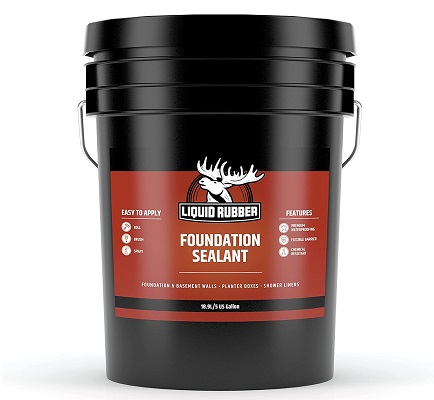
Latest Price On
The first sealant we have is from the brand LR, aka Liquid Rubber. It’s very well-known among homeowners and professionals alike. It comes in the color black, so it’s not for beautification, only for basic waterproofing purchases. As you’re using it in the basement, this should work fine.
This specific product comes in a volume of 5 gallons, which is a lot if your purpose is only basement leak repair. With each gallon covering up to 50 sqft of area, you can cover a total of 250 sqft area with the sealant.
It’s a water-based solution that also works as paint. And for the same reason, its negative effect on the environment is non-existent. You won’t smell any bad odor coming from it after application except the usual smell of chemical paint. It’ll wear off in a couple of days.
You’ll receive the product as a premixed non-flammable solution—no need to mix anything. Just open up the lid and start painting away. Being waterproof, it’s good for use in the foundation and basement. It’s environment-friendly as well.
And to get a good thickness of the membrane, apply 3-4 coats of sealant paint. Dry each coat before applying another. Keep a new brush or roller for each coat as the brush needs time to clean.
To give an example of its quality, it’s not a 2-part solution like most sealants, and that’s why it’ll last long if kept contained. After application, the protection membrane becomes highly flexible and elongates up to 900% of its original size. Puncture won’t be an issue unless it’s deliberate.
Pros
- Affordable
- Covers 250sqft
- 900% elongation
- No limitation on the pot life
-
Works as both sealant and paint
Cons
- Leaves the usual paint smell after application
2. Flex Seal Liquid Rubber
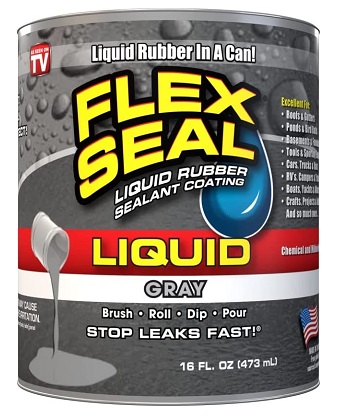
Latest Price On
Here, we have the popular Flex Seal sealant. It’s just like they say, liquid rubber in a can. But how does it perform? This is the only product on our list that comes in gray color, and it also has the least volume of the bunch.
In terms of volume, it’s only 16oz, or you can say 1/8th of a gallon. It’s evident from the amount that for a complete basement waterproofing, it’s too small. The 1-gallon version of this sealant can cover an area of 150s ft.
Thus, 16oz will cover only 18.75 sqft. So, keep this in mind before you start painting with only one can.
As far as waterproofing performance goes, it’s quite good when applied correctly. It has an elongation of 800%. That’s enough for waterproofing basement walls, but it can’t resist if the damage is too high. The flexibility isn’t enough for larger leaks.
It needs many heavy coats. Use at least 5 coatings to achieve a thick membrane. Each coating needs to dry before applying the next one. You can use the roll-on method to paint this sealant. The good news is that it cures quickly and leaves a smooth surface.
After application, your basement surface will be resistant to fungi like mildew and chemical spill. Additionally, if you apply it on metal, it will be safe from corrosion and rust formation.
Environmental concern isn’t an issue. It’s been certified as environment-friendly and tagged as non-hazardous, non-toxic, and non-flammable. So, you can use it in both indoor and outdoor conditions other than the basement.
Pros
- Mildew resistant
- 800% elongation
- Good sealing ability
- Indoor and outdoor use
- Environment and health-friendly
Cons
- The coverage area is small
-
Elongation isn’t as good as other products
3. Liquid Rubber Waterproof Sealant
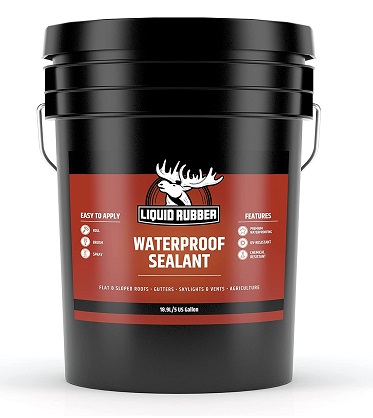
Latest Price On
Liquid Rubber has gained quite a reputation as a sealant brand with its different specialized waterproofing sealants. Here is another just like that, and it’s designed specifically for solar reflection. It’ll work just fine in your basement.
This package comes in a can of 1-gallon brilliant white sealant paint. You’ll love this white color as it’s quite bright. Apart from its visual aspect, this one has a coverage area of 50 sqft per gallon.
You’ll need a few heavy coats to get a thick enough final membrane. A good number of coats would be 3. After applying the paint, the membrane will be highly flexible. The elongation capability of this paint is given at 1000%. It won’t be easy to puncture it.
If you know how to use sealants, this one isn’t any different. Keep a note that the paint makes the brush/roller unusable immediately after you use it once. Use a new brush or roller every day for application.
The liquid rubber sealants don’t contain any harmful chemical elements, solvents, or bad odors. It’s a water-based solution that makes it completely safe for the surroundings as well as the overall environment.
For further use, when you’re done waterproofing your basement, you can use the rest on things like foundations, sheds, and RVs, which is its area of specialization. As a basement waterproofing sealant, just know that it works, but it might be a little more costly than the non-specialized sealants.
Pros
- 1000% elongation
- Brilliant black color
- Free from harmful elements
- Works on all areas of the house
-
Coverage area is 50sqft per gallon
Cons
- Might be overkill for an only basement application
4. Rubber seal Liquid Rubber Waterproofing Coating
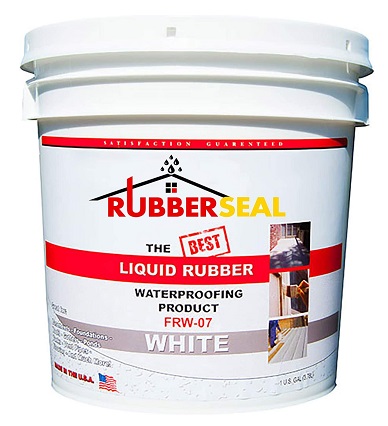
Latest Price On
This sealant is one of the better options you can consider. Rubber seals liquid rubber solution for waterproofing and coating maintain affordability while being one of the top choices in the market. You need a basement waterproofing sealant. And here you have it.
It’s one of those water-based VOC-free solutions specifically designed for house waterproofing. VOC-free means it doesn’t have volatile components, and no chemical component will seep from it into anything. One of its peak features is its ability to elongate up to 1500% with chemical and puncture resistance.
You can use it as a roll-on paint to waterproof your basement or repair any new leakage. Using it in the basement means it’s usable in places like foundations, ponds, roofs, etc.
It comes in white color, so if your theme includes white, it will match nicely. But it might not look as vibrant as darker colors. When used in ponds, it might take on the color of algae.
In terms of coverage area, it will cover up to a 60sqft area with each gallon at 20 imperial mils. And this container comes with exactly 1 gallon. So, depending on your requirement, you might need a couple. To achieve a thick enough protective membrane, apply at least 3 coats and let each coat dry before applying another.
With chemical products, environmental protection is always a concern. This rubber sealant has an EPA energy star rating. It doesn’t affect the weather, and the weather doesn’t affect its quality!
Pros
- Waterproof
- Thick membrane
- 1500% elongation
-
EPA energy star rating
Cons
- Only 1 gallon
5. USG DUROCK Brand Liquid Waterproofing Sealant
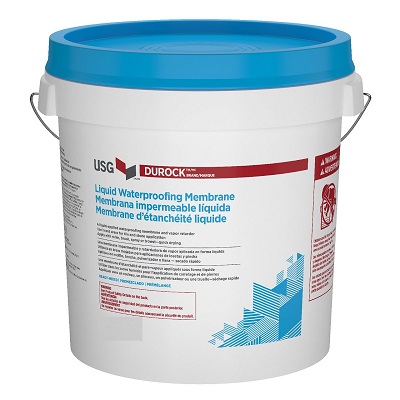
Latest Price On
At number 5, we have a sealant from USG Durock. This sealant has taken over the waterproofing basement sealant market, and it’s not the usual liquid rubber sealant you see on the market. It’s different in both density and quality. But it’s priced in an affordable range.
This USG Durock sealant comes in a container of 1 gallon. And each gallon of this sealant can cover an area of 25-30sqft, which, admittedly, is less than what the average liquid rubber can achieve. But the difference is that it takes only one coat to get a similar thickness. That cuts your job shorter.
That’s not all, it’s also different when it comes to elongation and flexibility. The elongation rating is at 275%, and again, it’s less than the 800-1000% ratings we’ve seen. But the thickness of this sealant not only makes up for it but also gives a boost to the integrity of your walls.
The color of the paint is flat blue, which is not everyone’s favorite, especially for a basement décor. So, this is something you have to come to terms with. But there are so many things that make it worth purchasing. Like it’s a short drying time! It takes only an hour or so.
Another good thing about it is that you only have to use warm soapy water to rinse off the paint to get it ready for another waterproofing session. It’s the thickness of the paint that helps. While it’s not an outdoor sealant, it’ll work perfectly for your basement.
Pros
- Affordable
- Short drying time
- Specially designed for wet areas
- Fewer coats needed for thick membrane
-
Coverage: 25-30sqft per gallon on average
Cons
- Low elongation
6. Liquid Rubber RV Waterproof Sealant
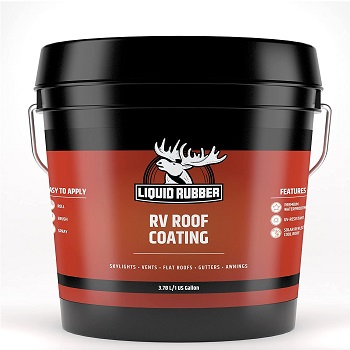
Latest Price On
We have another sealant product from the brand Liquid Rubber. And this one is more expensive than the previous one on our list, but still, it stays in an affordable range. All products from LR are of high quality, and it’s the same here.
Now, there’s a reason for the price increase. It’s suitable to use in all areas of your house, including outdoor places. In terms of basement use, it maintains its waterproofing ability with a few differences.
The container comes with 5 gallons of black sealant paint. With each gallon, you can paint up to 30sqft on vertical surfaces and 15sqft on flat surfaces. So you’re getting a total coverage area of 75 sqft to 150sqft. That’s less than what the non-RV sealant can cover.
To achieve a good protection membrane, it needs heavy coats. For vertical surfaces, you’ll need 3-4 coats for 30mil thickness, and for flat surfaces, 60-80mil thickness will need 5 coats.
Regarding its ability to protect the walls from leaks, it has a high elongation of 1000% after finishing the coating process. The flexibility of this sealant makes it a perfect waterproofing component. No need to be worried about puncture all the time. It’s a UV-resistant sealant, although, for your basement, it’s got no use!
It’s a water-based product and doesn’t contain any VOC or chemical solvents. So, no contamination will occur. Regarding pot life, as it’s a one-part solution, it will stay untainted for a long time.
Pros
- VOC-free
- UV-resistant
- 1000% elongation
- No limit pot life
-
Usable in both indoor and outdoor
Cons
- Small area coverage
7. Rain Guard Waterproof Coating Sealers
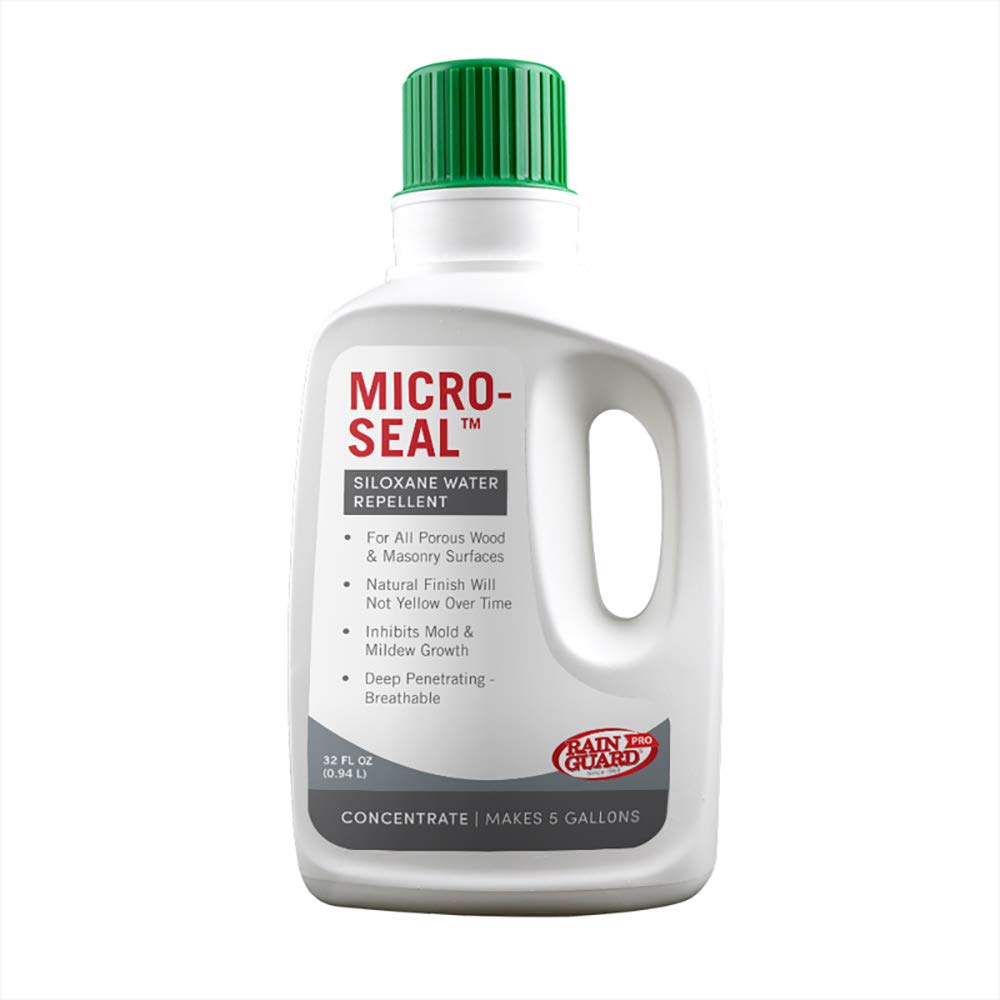
Latest Price On
The last product on this list is unique from every point of view. It’s not your typical sealant paint. Rain guard basement waterproofing sealers are ideal for surfaces that are already painted and need waterproofing. There’s more to it!
In terms of area coverage, this sealant stands out tall with a huge 1500sqft of coverage with only a quarter of a gallon. It can cover many basements with one can. And it works on all masonry surfaces such as concrete, plaster, etc., and both horizontal and vertical surfaces.
Another benefit of using this sealant is that there’s no need to scrape off the existing paint to apply it. It’s a 100% breathable sealant that leaves a clear invisible protective layer after application.
But this layer isn’t a surface film. The protective membrane mixes with the existing paint, so visually, you can’t discern between paint and sealer. At the same time, it protects your paint and wall from oil and gas stains.
It’s a water-based basement wall sealer, just like all good basement waterproofing sealers on the market. But the fact that it doesn’t change the visual aspect of your surface is something rare. Yes, it does give an advantage to those who already painted their house with normal paint. But the low cost is an undeniable fact.
Why doesn’t it change the appearance of your existing paint? It’s all thanks to the no-sheen formula of the solution. It also contains a non-yellowing formula that helps to maintain the existing appearance.
Pros
- Water repellent
- Covers 1500sqft
- 100% breathable sealer
- Works on all masonry surfaces
-
Maintains the previous appearance
Cons
- It doesn’t replace paint
What to Look for Before Buying Sealant for Basement Walls?
Before you make the final decision on which sealant to buy, make sure you know your priorities. There are certain factors that you need to consider. These factors determine the best sealant paint for basement walls. We discuss them below briefly.
Flexibility and Elongation
A sealant’s flexibility is important to determine its quality and ability to stick to a surface. If it doesn’t have enough flexibility, it will get punctured easily, and waterproofing will lose its integrity. The elongation of the sealant determines its adhesion quality. It’s the adhesion of the sealant that keeps it secure from leakage.
Membrane Thickness
The final membrane on your wall after you apply the sealant needs to be thick enough to get good flexibility.
Each sealant is different. Some need up to 5 coats to achieve the same thickness, while others need only 1 or 2 to achieve the same. It’ll also determine how many gallons/ounces of sealant you’ll need to complete the project.
Color of the Sealant
Among the sealants you find on the market, each has a certain color pigment mixed into it. Only the paint cum sealants have color. And the color may prove to be vital if your basement has a theme to it. White and black are the most common color.
Area Coverage
How much sqft can a sealant cover with 1 gallon of its volume? This question is an important point to determine the amount of sealant you need to buy. You may need only half a gallon or more than a gallon for your project while you bought less or more than what you need. Know that opened containers have a limited shelf life.
Drying and Curing Time
There’s no way to tell exactly how much time a sealant will take to completely dry and cure. Still, it’s important to keep a record of your surrounding temperature and humidity as these two play a vital role.
A sealant may take only a few hours to a few days to dry, depending on its density and your surrounding weather condition. Curing takes weeks or more than that.
Frequently Asked Questions
Should I seal the basement walls if there’s no leak?
Even if there’s no basement leak, you should waterproof the basement anyway. It’ll save you from future headaches. Use any paint sealant to replace normal paint.
Which type of sealant is better?
There are mainly 3 types of sealants available: Water-based Latex, Silicone, and Acrylic. The better basement waterproofing sealant is Water-based Latex.
How much time does it need to dry and cure?
For water-based polyurethane, the drying and curing time can extend to more than 2 weeks. For oil-based poly, it can go over a month to dry and cure.
Sealer or sealant, which is better?
Sealer and sealant both have their places. One isn’t better than the other. If you have existing paint, a sealer is the better option. If it’s a new surface that needs painting, paint sealants are better.
Are Acrylic sealers water-based?
Acrylic sealers come in both water-based and solvent-based solutions. They both act differently. Solvent-based one darkens the surfaces and a bit glossier than water-based sealers.
Final Words
We’ve finished our little review of the lucky 7 sealants. So, what is the best sealant for basement walls? The answer should be clear as day to you. If you already have existing paint, the Rain Guard sealer is a good fit; else, any one of the rest will do the job.

